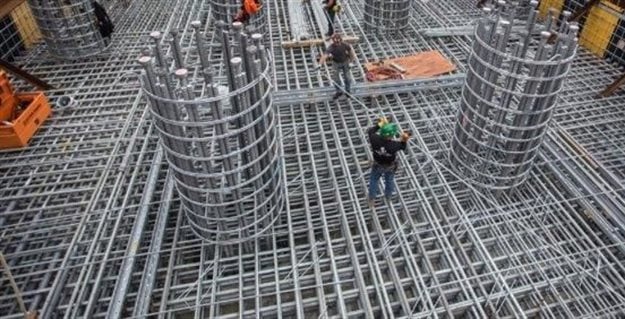






The investment is likely to see an increase in the demand for galvanised steel, especially with the economy anticipated to grow by 2.1% this year and 2.2% in 2022. The focus on renewable energy to assist in meeting the country’s electricity shortfall will also lead to a boom in solar energy plants and wind farms, which present another avenue for the increased uptake of galvanised steel.
The Africa desk of the IZA is tasked to address the decline of the zinc industry in the country and on the continent. Internationally, the IZA represents global mining companies and zinc refiners. The main focus is South Africa at present, particularly in the key target areas of mining, construction and infrastructure development, but the plan is to include potential growth markets such as Kenya, Egypt, Algeria and Morocco in the near future.
While South Africa has 20% of the world’s zinc deposits, it no longer refines any zinc, following the closure of the Zincor refinery in Springs by mining company Exxaro at the end of 2011. Up to that point, the country produced 110,000 tonnes/year of refined zinc worth about R4.3bn. From 2014 to 2019, South Africa imported R15bn worth of refined zinc.
However, the uptake of refined zinc has declined rapidly from 86,000 tonnes in 2015 to 47,000 tonnes in 2020. This represents a major challenge, and therefore the IZA’s short-term goal is to gradually boost zinc uptake to a new high of 60,000 tonnes/year, ultimately peaking at 90,000 tonnes/year in three years’ time. “Zinc is one of the major global commodities, along with the likes of iron ore,” comments Norton.
The majority of refined zinc is used for corrosion protection of steel. However, its varied applications range from being an essential ingredient in fertiliser for the agricultural industry to being an important nutrient and health supplement. Zinc is also a major constituent in the die-casting of metal automotive components and vulcanising rubber tyres.

Zinc also offers long-lasting corrosion protection, an important consideration in South Africa’s coastal areas. As a protection barrier, zinc resists corrosion by isolating steel from the external environment. Zinc is also anodic to steel, meaning it corrodes sacrificially to protect the underlying material. In addition, a natural zinc patina develops as the coating weathers, slowing the overall corrosion rate, as well as creating a material with a distinctive appearance that is much in demand by architects and designers, for example.
Such a coating is applied by the process of either hot dip galvanising or continuous galvanising, the latter used mainly for steel sheets. The main mission of the IZA is to promote awareness of the corrosion protection capability of zinc among professionals such as designers and civil and consulting engineers. It is also hoped to encourage South African zinc industry companies, such as hot dip galvanisers, continuous galvanisers, wire plants and die casters, to become IZA members.
The IZA also plans to reignite the debate of re-establishing a zinc refinery in the country, ideally in the Saldanha Bay Industrial Development Zone (IDZ). This will not only lessen its dependence on costly imports, but also make the refined end product more readily available locally and therefore able to be specified and consumed in greater quantities.
“The debate around building a new zinc refinery is linked to the issue of the future development of our rail sector to promote such wide-ranging industrial and economic development. For example, locating such a refinery in the Saldanha IDZ is ideal, as it means that the Sishen-Saldanha rail link can be used to convey zinc concentrate. In addition, we can build new rail linkages from Gamsberg and Prieska, which are massive infrastructure projects by themselves that stand to generate thousands of much-needed jobs,” highlights Norton.
Due to the Covid-19 pandemic, the IZA launched two webinars last year on the essentials of hot dip and continuous galvanising. It also plans to reach out to industry bodies representing the major engineering disciplines, as well as the Minerals Council of South Africa, Transnet, the National Ports Authority, the Department of Water and Sanitation and the South African Local Government Association.